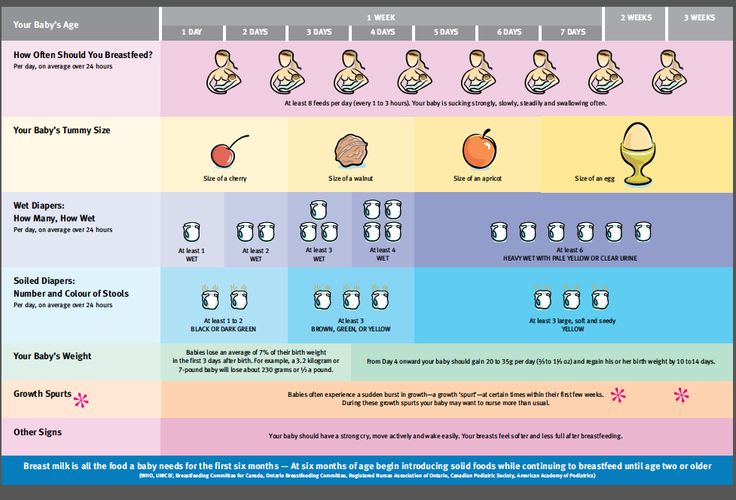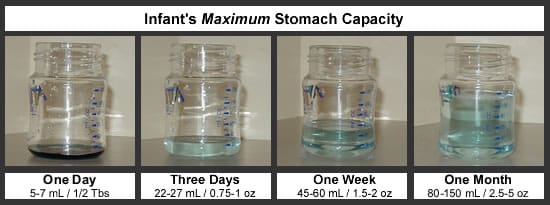In a low-risk delivery, a mom can be discharged from hospital in under 24 hours. While I understand the new parent’s wishes to sleep in their own beds and to get into a routine at home, it can be difficult to provide all the information new parents may want or need about breastfeeding. Want to book a virtual lactation consultation with me? Click here. Here is the Cole’s notes version of what I think is important for new parents to know before they go home with their new bundle:
- Being skin-to-skin not only will help regulate your baby’s temperature, breathing, heart rate and glucose levels after birth, but will also calm your fussy baby. Your baby may also start rooting around for the breast while skin-to-skin. If he does so, you can help him to your breast and he may latch on his own!
- If after the first day your baby is not waking up for feeds at least eight times per day, he may need your help. Gently coax your newborn to wake up for feeds by unbundling and undressing your baby and placing him skin-to-skin, stroking his body and expressing some breast milk and placing the drops on his lips.
- Feed your baby on-demand, according to their feeding cues. If you see your baby turning his head from side-to-side, opening his mouth, licking his lips and bringing his hands to his mouth, these are early signs that he is hungry. This is the perfect time to start nursing! It is much easier to get a baby latched on before they are ravenous and fussy.
- If baby is not latching, is crying and you’re feeling overwhelmed, take a break. Place your baby skin-to-skin or go for a walk around the room until you both calm down. Sometimes a bit of time to refocus can do wonders.
- I know it’s going to be hard with all the adrenaline and visitors, but you need to try to sleep as much as you can the first day postpartum. Babies oftentimes become fussy on their second night, and the mom’s tiredness has finally caught up with her, which makes breastfeeding difficulties seem 1000x more stressful than they should be. When your baby is sleeping through the day, try to get some rest.
- If your newborn is sleepy at the breast before feedings are done, try compressing your breast to stimulate milk flow. You may be able to extend feedings for longer and therefore baby may be more satisfied after feeding,
- In the beginning, it helps to support your baby’s neck with one hand and your breast with the other, at least until latch is achieved. Once a baby’s neck muscles are well developed, the cradle hold will be supportive enough and you will have a free hand.
- My patients have always had great success with creating a “breast sandwich” (yes this is the correct term!) for their babies to latch onto. This can also be called a U or C hold, depending how how baby is positioned. Using their thumb and forefinger placed away from the areola on either side of baby’s mouth, moms make a ledge for their babies mouths to latch onto. Then bring your baby to the breast chin first, then nose to nipple, latching the lower jaw first. This helps make sure that babies are latching onto the breast tissue like they should be, and not just the nipple.

http://www.llli.org/llleaderweb/lv/lvfebmar04p3.html

http://www.llli.org/llleaderweb/lv/lvfebmar04p3.html
- When your baby is latched on, you should feel pulling not pinching, should see slow and strong jaw thrusts, and hear audible swallowing.
- It is normal for a newborn to follow a pattern of: suck, suck, suck… pause, swallow. Many parents worry that they are falling asleep during the pause, but they are just learning how to effectively feed from your breast.
- When your baby comes off your breast after a feed, your nipple should be round, not pinched. If it is pinched, this means baby is not getting enough breast tissue in their mouths and eventually your nipples will become very sore and your baby may not gain as much weight as they should. If this is the case, try to obtain a deeper latch next time. If it keeps happening, make sure you get extra support to ensure you obtain a great latch from an experienced nurse, lactation consultant, or midwife.
- Check out this article if you are worried about your baby not getting enough breast milk.
- Always make sure you are positioning baby tummy-to-tummy with you, that his head is in proper alignment with his body (not trying to feed with head tilted sideways), and that his bum is tucked in.
- If one position isn’t working for you and baby, try another! If you don’t find cross-cradle or cradle hold is working, try laid-back nursing, football hold or side-lying. Sometimes it takes awhile to find what works for you and baby. There is no perfect way to breastfeed. Don’t give up.
- To begin with, a newborn infant’s stomach is the size of a cherry. This means that the small amount of colostrum is all that baby needs right now. It also means that your baby is going to want to nurse frequently. Frequent nursing will help your milk come in!
- Though many new moms express worry, is very uncommon for moms immediately postpartum to not produce enough milk for their babies, barring breast augmentations (which doesn’t always mean breastfeeding is off-limits), an extreme postpartum hemorrhage or certain medical conditions. This article by KellyMom about increasing low milk supply is super helpful.
- Read up on manual expression before your baby is born. It could be really helpful if your baby is having trouble latching on right away because you will still be able to feed your baby colostrum from a spoon or cup. This will take supplementing with formula off of the table, and the extra stimulation will help bring in your milk supply.
- If you’re not comfortable with manual expression and your baby is having trouble latching on, you may want to rent a hospital-grade breast pump temporarily. Pump both sides at least 8 times a day for 20-30 minutes, to stimulate your milk supply. There should be a few breast pump rental services available in your community. Ask at the hospital or contact public health if you are unsure.
- If you have flat or inverted nipples, you can still breastfeed. Try stimulating your nipple prior to feeds, with a breast pump, breast shells, or manual stimulation. Make sure your baby is getting most of your areola into his mouth during feeds. If all else fails, try a nipple shield. Just make sure that you get one that fits you right! There are multiple sizes to choose from. If you are using a nipple shield, make sure to follow-up with a lactation consultant.
- If you are finding yourself needing to supplement with breast milk or formula using a bottle for medical reasons and want to avoid confusion, look into paced bottle-feeding to avoid problems with breastfeeding later on.
- To help survive clusterfeedings, arm your space with everything you need: large water bottle, snacks, the remote, movies, books, phone charger, phone, etc… and try to enjoy this time with your baby.
- Get out of the house, and nurse your baby in public. It is against the law to discriminate against breastfeeding mothers and you have rights. Wear whatever makes you feel most comfortable – with a tank top underneath, a nursing cover or blanket on top, a nursing shirt, or regular shirt – Don’t worry about what other people think. Your baby deserves to be fed on demand, and you deserve to live a fulfilling life.
Well, I think that’s enough for now! Hopefully the new mamas out there find this information helpful. Make sure to ask for help if breastfeeding is not going smoothly for you. If you think of something important that I forgot, please leave a comment below to help other mamas out there. And don’t forget to share this info with your friends and family!







This is a very detailed guide! Thank you for sharing this. I’m sure it will be a ton of help for new moms!